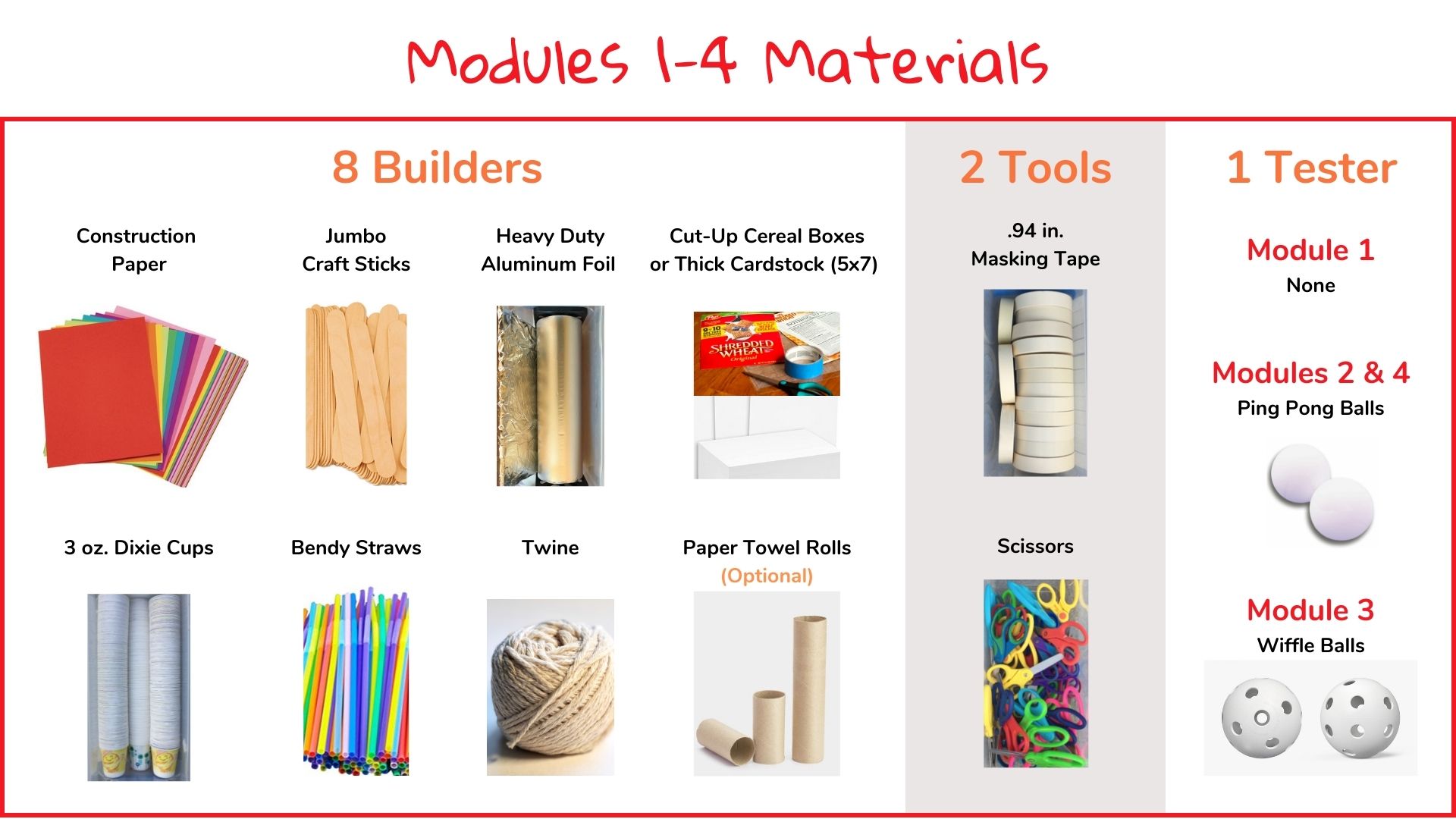STEM Challenge: Martian Music Mania

Challenge
Invent musical instruments for the astronauts, who plan to create a Martian music video using a special orbital camera. This camera, designed to orbit Mars with minimal thrust due to the planet’s weaker gravity, will capture their interstellar jam session.
Constraints and Success Criteria
- Instruments must be innovative and suitable for use in a Martian music band.
- The design should consider the unique environment of Mars, including its gravity.
- The instruments will be featured in a music video, requiring them to be visually interesting as well as functional.
Materials

You do not need any testers for this challenge.
Set Up
- Prepare Materials: Ensure you have all the necessary materials ready beforehand and organize them so that they are easily accessible to students. Students should use no more than five of any one material per creation! For example, a student can use five straws and five pieces of paper, but not ten straws. If you provide aluminum foil, no more than one arm’s length piece for each student!
- Set Up Testing Area: Create a designated area where students can test their instruments.
- Provide Guidelines and Constraints: Reiterate the challenge to students, as needed. Building time is 45 minutes!
- Model the Design Process: Before students begin, demonstrate the design process by going through the steps yourself. Discuss how to brainstorm ideas, create prototypes, test them, and make iterations based on the results, as needed.
- Encourage Collaboration: Foster a collaborative environment where students can work together in pairs. Encourage them to share ideas, help each other troubleshoot challenges, and provide constructive feedback throughout the process. But no groups of three!
- Support Adaptation: Encourage students to embrace the mindset of adaptation and problem-solving. Help them see that setbacks and failures are opportunities to learn and make improvements. Guide them in identifying areas for adaptation and brainstorming alternative solutions.
- Facilitate Reflection: Set aside time for students to reflect on their design process and decision-making. Ask questions that prompt them to think critically about their choices, challenges they faced, and what they learned from the experience. This reflection can be done individually, in pairs, or as a whole-class discussion.
- Celebrate and Showcase: Celebrate students’ efforts and showcase their instrument designs. Provide a platform for them to explain their design rationale and play their instrument, if possible.
CASEL Discussion Questions
Five questions aligned to Responsible Decision Making — our focus CASEL competency for Module 3 — for teachers to foster an engaging discussion and social-emotional learning
- How did you decide which materials to use when building your instrument? Did you consider factors like weight, durability, and sound quality?
- What were the potential consequences of your instrument design decisions? How did you consider the impact on the overall sound of the Martian music band?
- What role did empathy play in your instrument design? Did you consider how the astronauts would use and play the instruments in the unique environment of Mars?
- Can you share a moment when you had to compromise with your team on a design element? How did you balance different ideas and viewpoints to make a responsible decision?
- How did you resist any negative peer pressure or external influences that could have steered your instrument design away from the band’s goals? Share how your commitment to responsible design helped you stay on track.



